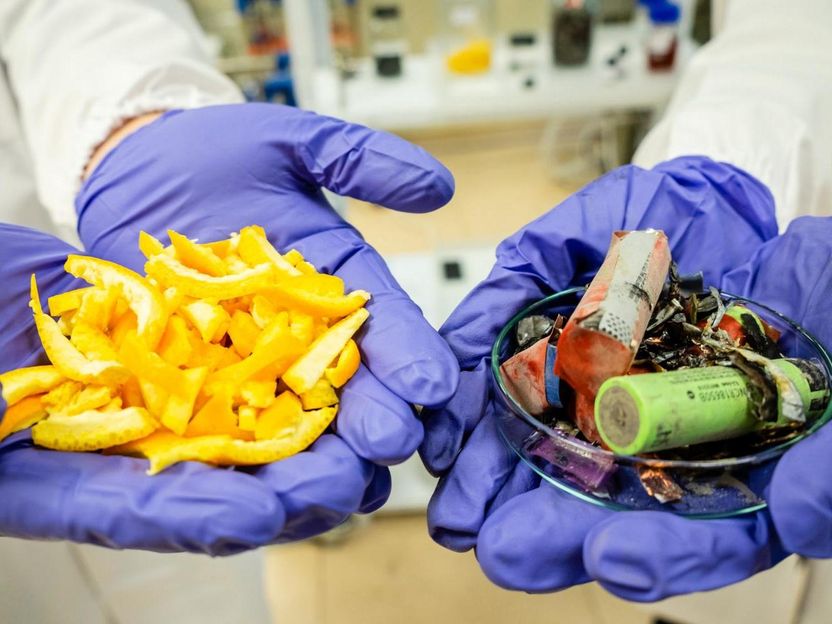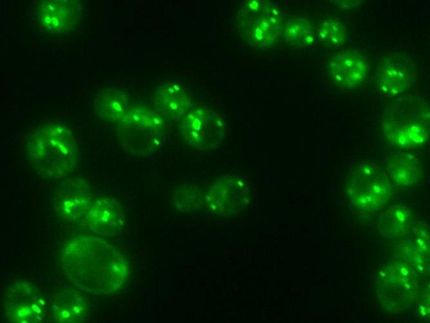Scripps scientists develop test providing new pathway for identifying obesity, diabetes drugs
Scientists at The Scripps Research Institute have designed a new molecular test that will allow researchers to look for potential drugs targeting a human metabolic enzyme believed to stimulate the appetite and play a role in diabetes.
The new test, which the scientists call a simple assay, will allow researchers to look through hundreds of thousands of compounds for those that have potential to block the action of an enzyme known as ghrelin O-acyltransferase (GOAT). If drugs can be found that safely suppress the action of GOAT, they may help people who have clinical problems with appetite, obesity, and diabetes.
"There hasn't been a simple screen until now," says Kim D. Janda, Ph.D., a professor in the Departments of Chemistry and Immunology and Microbial Science, member of The Skaggs Institute for Chemical Biology, and director of The Worm Institute for Research and Medicine at Scripps Research.
Janda and Amanda Garner, Ph.D., a research associate in his laboratory, describe the new approach — which may also prove useful for investigating other enzymes involved in a variety of diseases — in an advance, online Early edition of the journal Angewandte Chemie on September 15, 2010.
A Tempting Target
Even though GOAT was only discovered recently, in 2008, scientists had speculated for years that it had to exist. After all, its target (ghrelin, or the "G" in the acronym GOAT) had been known for more than a decade.
Ghrelin, a small peptide hormone that is mainly produced in the stomach, signals hunger, typically before meals. Ghrelin has been associated with Prader-Willi syndrome a common genetic cause of childhood obesity in which patients have exceptionally high ghrelin levels. The biology of ghrelin is quite intricate. For ghrelin to impact the body's metabolism, it must move from the stomach to the brain, where it acts on neurons. GOAT acts as a "passport" check point station for the processing of 'pro-ghrelin.'
"Without GOAT's modification of 'pro-ghrelin,' ghrelin's entry into the brain, and thus its medicinal implications, are nullified," said Janda. "That's why GOAT has been coveted as a promising therapeutic target for obesity and diabetes."
However, the task of finding drug-like compounds that target GOAT has been complicated by the fact that the enzyme is difficult to work with. As a membrane-bound protein, GOAT cannot easily be purified to homogeneity and has to be suspended in a fatty environment. Most critically, however, no user-friendly high-throughput screening tests had been developed for this class of enzymes. Current assay technology for targets similar to GOAT rely on radiolabeling techniques, which are labor-intensive and require additional safety precautions. When Janda and Garner set out to develop an assay to monitor GOAT's activity, they aimed to change this situation.
Taking a Fresh Approach
The scientists were particularly interested in designing a fluorescence-based assay for GOAT. In contrast to radiolabeling techniques, fluorescence assays are safe, can easily be performed in a high-throughput format, and require only a simple light source.
In developing their new approach, the team was inspired by enzyme immunoassay strategies commonly used in biology, chemistry, and medicine, and by "click chemistry," a concept developed at Scripps Research. Because the amount of ghrelin modified by GOAT is minute, the scientists also used the principle of multi-turnover signal amplification for accurate detection.
In the end, the team succeeded in designing and creating the new technology — which they call "catalytic assay using enzyme-linked click chemistry assay" (cat-ELCCA).
Most read news
Other news from the department science

Get the life science industry in your inbox
By submitting this form you agree that LUMITOS AG will send you the newsletter(s) selected above by email. Your data will not be passed on to third parties. Your data will be stored and processed in accordance with our data protection regulations. LUMITOS may contact you by email for the purpose of advertising or market and opinion surveys. You can revoke your consent at any time without giving reasons to LUMITOS AG, Ernst-Augustin-Str. 2, 12489 Berlin, Germany or by e-mail at revoke@lumitos.com with effect for the future. In addition, each email contains a link to unsubscribe from the corresponding newsletter.
Most read news
More news from our other portals
Last viewed contents
Research on crucial cutting enzyme maps sites of DNA damage in leukemias and other cancers
Scientists identify DNA alterations as among earliest to occur in lung cancer development
Merck Settles Patent Infringement Case for Zetia (ezetimibe)
Merck awards its 2017 Grant for Fertility Innovation (GFI) to research projects - Professor Lunenfeld honored with Merck Lifetime Achievement Award

Scientists use fruit peel to turn old batteries into new - Using orange peel to efficiently recover precious metals from battery waste
Millipore Expands BioPharma CRO Services in Europe
Key factor in mitochondrial calcium uptake and bioenergetics identified
Frost & Sullivan: BRIC is not delivering promises of high growth in healthcare markets - The dialogue evolves as it’s no longer about volume, cost and size
QIAGEN Acquires Biosystems Business from Biotage - Transaction adds fundamental assay technology for high-resolution sequence detection and quantification of genetic variations
2,6-Di-tert-butylphenol























































